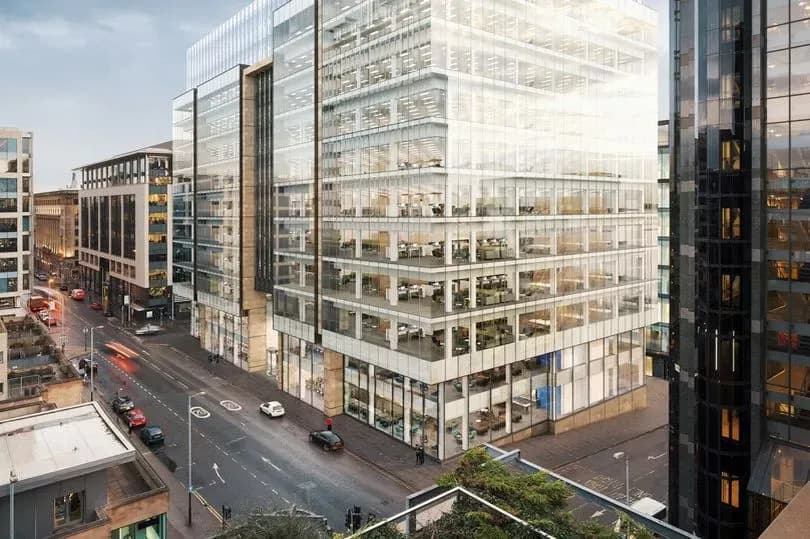Top 10 UK Commercial Property Opportunities for 2026

 Ayman
AymanAyman
15th Oct 2025
🕰️ 5 min read (919 words)
A diversified portfolio targeting prime, technology-driven, and ESG-compliant commercial property assets offers the best chance of strong, risk-adjusted growth in 2026. This guide provides the top 10 UK commercial property opportunities for the year ahead, using newly released data and forecasts from the sector’s leading market reports. Each opportunity spotlights where investor returns and market momentum are expected to be strongest, helping guide strategic decisions for Leanspace and its clients
1. Prime London Office Assets
Investment volumes in Central London Grade A offices rebounded in H1 2025, with transaction levels rising 15% year-on-year as investors chased stable rental income and capital growth. Vacancy rates remain below 5% in the West End and City, underpinning rental growth of 3%–4% across core submarkets.
Demand for best-in-class, sustainable and well-located offices continues as tenants focus on attracting talent and aligning workplaces with ESG targets, contributing to further rental growth and competition for space in premium areas. Prime rents increased across all five main Central London submarkets in H1 2025, with the West End seeing headline rents reach approximately £162.50 per sq ft and trophy assets in Mayfair/St James’s consistently achieving £160+ per sq ft, while City prime rents stand near £88.50 per sq ft and rising.
2. Regional City Core Offices
Leasing in UK regional cities reached its strongest H1 performance since 2019, driven by professional services and technology occupiers seeking high-quality space outside London. Manchester and Birmingham saw take-up exceed 1 million sq ft in H1, compressing prime yields by 25 basis points over the period.
JLL’s latest report confirms that 61% of investors surveyed are increasing allocations to UK regional city offices in response to resilient occupational demand and attractive entry yields.
3. Large-Scale Logistics and Distribution Parks
Occupier demand for modern logistics reached pre-pandemic levels, with availability of large sheds (<100,000 sq ft) tightening to 2.8% of stock nationwide. Investment into industrial real estate jumped 59% year-on-year in H1 2025, fuelled by e-commerce growth and ESG-driven developers.
Supermarkets and logistics operators are driving major lettings, motivated by the popularity of online retail and the need to modernise distribution networks with automation and energy efficiency.
4. Data Centre Platforms
Data centre take-up hit a record H1 level of 1.2 GW of IT capacity, supported by the UK Compute Roadmap and AI infrastructure expansion. Cross-border investment accounted for nearly 50% of total CRE volumes, with hyperscale operators securing long-lease agreements in edge markets.
Private sector investment in UK data centres reached £44 billion over the last 12 months alone, with global operators prioritising British sites due to the supportive regulatory landscape and rapid progress on planning permissions for energy-intensive builds.
5. Life Sciences and Innovation Districts
The Oxford–Cambridge Arc registered £1.1 billion of life sciences deals in H1, backed by government grants under the Modern Industrial Strategy and robust venture capital flows. Pre-lets for lab space totalled 450,000 sq ft, the highest H1 figure since 2018.
Active leasing demand is growing, with Oxford alone recording more than 640,000 sq ft of total named requirements by mid-2025, and major occupiers targeting larger-scale developments alongside a range of smaller high-growth firms.
6. Build-to-Rent Residential-Anchored Schemes
Build-to-Rent completions rose 12% in 2025, driven by purpose-built operators targeting urban infill sites with ground-floor retail. Rents have grown 5.5% year-on-year, outpacing private rented sector averages. Cities such as Manchester, Birmingham, and Leeds remain at the forefront of this growth, with over half of Manchester’s new housing supply in 2024 consisting of BTR developments and significant further expansion planned for 2026.
The sector’s ability to deliver high-quality, professionally managed rental homes quickly is recognised as a key means of closing the UK’s significant housing supply-demand gap, making BTR central to the government’s long-term housing strategy.
7. Flexible Workspace Operators
Flex space operators expanded into under-served regional hubs, with network occupancy reaching 71% in Q2 2025 versus 62% nationwide in traditional offices. Corporate hybrid policies highlight demand for smaller footprints and short-term leases.
Occupancy resilience amid a 32% rise in national flexible office supply points to the sector’s maturity: new space continues to absorb quickly as both landlords and tenants pivot away from long leases to managed, adaptable models.
8. Healthcare and Senior Living Real Estate
Healthcare sector investment climbed 28% in H1 2025, with 93% of investors planning to increase exposure to senior living and medical facilities due to ageing demographics and defensive income profiles.
Demographic trends, particularly the projected doubling of the UK population aged over 85 by 2045, are creating structural long-term demand for care homes, specialist clinics, and senior living assets, all of which benefit from long-duration, inflation-linked leases.
9. Purpose-Built Student Accommodation
University capacity constraints and rising international enrolments drove a 4% increase in student rent levels and 98% occupancy in major hubs (London, Manchester, Edinburgh) in 2025. Development pipelines totalled 80,000 beds, with pre-lets securing 70% of schemes ahead of delivery.
The surge in international student numbers, especially from Asia and Africa, has put unprecedented pressure on accommodation supply, as top universities struggle to house incoming cohorts and balance quality with affordability.
10. Retail Parks and Grocery-Anchored Retail
Retail park rents grew 4% in H1 2025, outperforming high-street retail by 2 percentage points, as grocery-anchored schemes delivered stable footfall and long-lease covenants. Investment volumes for retail warehouses increased 22%, underscoring resilience amid broader retail challenges
Grocery-anchored retail parks continue to benefit from consumers’ preference for convenience shopping, with stable footfall supported by strong supermarket anchors such as Tesco, Sainsbury’s, and Aldi, which account for over 60% of UK retail park income.


